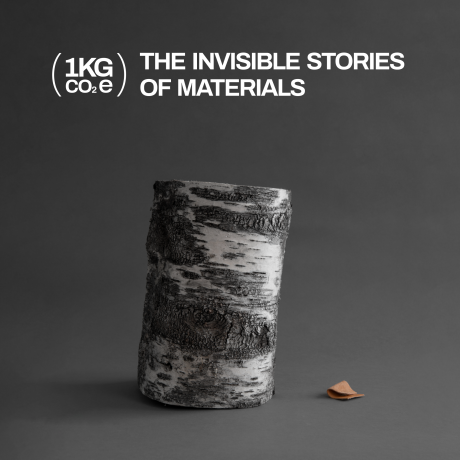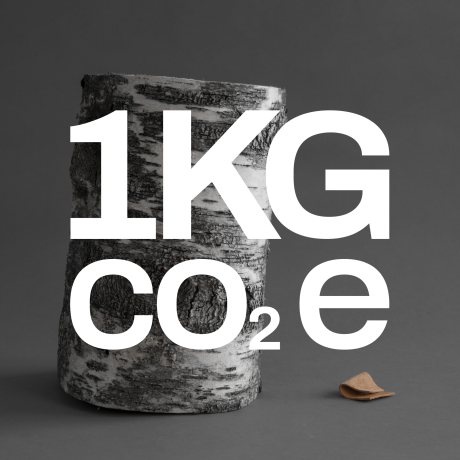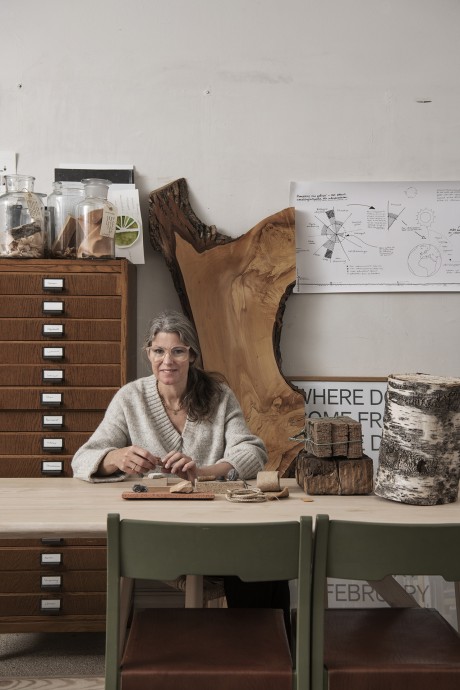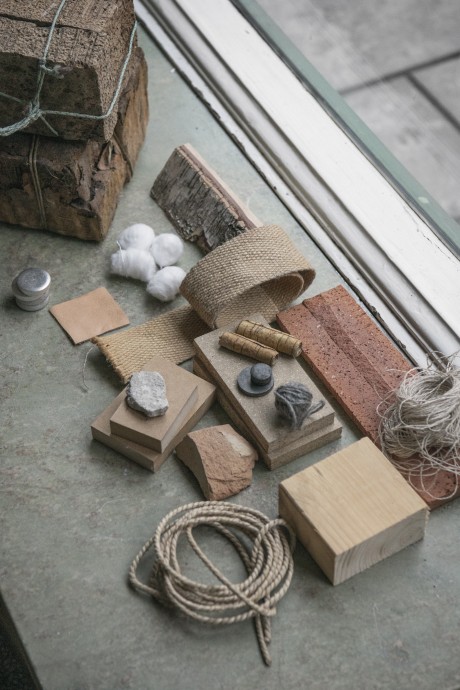Now or Never - 1kg CO2e
At the Furniture Fair in Stockholm 7th-11th of February 2023. An exhibition about the invisible climate impact of our furniture, and about the power of choice.
In a few short years, up until 2030, we must reduce our global emissions by more than half to avoid irreversible and catastrophic climate change. Significant shifts are required. This exhibition is here to inspire a transformation in how furniture is made - demonstrating how much of different materials we can get for 1kg CO2e. It’s time to choose wisely.
What impact does our furniture have on the climate? 1kg CO2e is an exhibition shown at the Stockholm Furniture Fair 2023. On display are 40+ materials - both traditional materials, and new climate innovative ones. As part of the exhibition, several panel discussions are being held, and the installation will serve as a venue for meaningful conversations and networking. We hope to see you there. Different materials are shown together with their climate impact. By measuring carbon dioxide equivalents (CO2e) - the metric that is used to understand the climate impact of products - we can clearly see that our choice of materials is important. A single chair can cause everything from a few kilograms of CO2e, to several hundred.
For furniture, the material choices we make as an industry typically accounts for around 50% of the carbon footprint. Material choices do matter. This is why we have dedicated this exhibit to materials and the invisible differences between them. In the exhibit you can see how much of different materials you get for 1 kg of CO2e. What materials do you choose for the future?
To achieve climate safety, by 2030, each person on the planet should emit no more than approximately 2,5 tonnes of CO2e per year. Today, Swedes on average, emit around 9 tonnes per year. This means that we now have 7 years to cut emissions by around 70%. If we assume that the climate footprint of furniture has to follow the same reduction curve - then we have precious little time to change how we produce and nurture furniture to give people access to seating, comfort, relaxation, beauty and all of the other things that furniture does.
Nine planetary boundaries, beyond climate change - Climate change is not the only environmental impact to consider for humanity, furniture creators included. Science tells us that there are at least eight other planetary boundaries that help define a safe operating space for humanity. Put simply, the planetary boundaries are environmental thresholds within which humanity can survive, develop and thrive for generations to come. Crossing these thresholds come at the risk of abrupt and irreversible environmental change. When selecting materials it is important to consider the other planetary boundaries beyond climate change. Want to learn more?
Planetary boundaries - material examples
Wood - As an industry we love wood, but how much do we love our forests? Across the globe deforestation is still a big issue and we are in the midst of a huge biodiversity crisis. So, beyond climate change it is important to at least ask the following when sourcing wood:
- How well is the forest ecosystem managed that the wood comes from?
- Is biodiversity protected?
Cotton fabric - While cotton might seem to be an innocent enough material, in reality it is a material with many environmental and social issues from farm to finished fabric.
- How are ecosystems, soils and water managed from farm to factory?
- How are pesticides, fertilisers and other chemicals used and managed?
- How is pollution avoided?
- How is worker health and wellbeing safeguarded?
Steel, copper and other metals - Metals are a versatile and durable material - but they are typically very energy and emission intensive to produce, and the mining sector has a big impact on our planet.
- How are ecosystems and waterways around the mine impacted from the mining operations?
- Is biodiversity protected?
- How is waste and pollution to air and water managed?
A note on methodology - The climate impact data used in the exhibition comes from Doconomy, a company that develops digital tools to help us all live in a more sustainable way. The carbon footprint of the different materials have been calculated as carbon dioxide equivalents (CO2e). The calculations include all greenhouse gas emissions covering a cradle-to-gate perspective, meaning that all emissions from the extraction of raw materials, transport and manufacturing until the material has been produced in the factory are included.
The sources used includes Doconomy’s own 2030 Calculator, databases such as Ecoinvent, environmental product declarations (EPD) and academic studies. For most of the materials the emissions data reflect industry average values. However, in a few cases where industry data isn’t available, we’ve used company specific data (with third party verification) and data from academic institutions. In a number of cases we’ve triangulated different sources to come up with a final number.
It should be noted that significant variations in emission intensities can exists within the same material group depending on for example manufacturing methods, geography and assumptions made during calculation. In light of this, it is best to view the numbers in the exhibtion as giving you an understanding of the relative size of the carbon footprint of different materials - i.e., which materials you get a lot of for 1kg of CO2e, and which ones you get less of. It also means that this is not only about choosing better materials, but also about choosing better suppliers from a sustainability perspective.
Biogenic carbon, that is carbon that is stored in trees and plants as they grow, has not been included in the calculations. It has been excluded since the scope only covers cradle-to-gate emissions, and not the full life cycle. There are also uncertainties about the assumption that biogenic CO2 emissions cause no harm to the climate, which gives us further reason to exclude biogenic carbon from our data sets.
About 1kg CO2e - The 1kg CO2e exhibit is the brain child of furniture designer Emma Olbers and the result of a creative partnership with SALLY - a future manifestation lab at the design and innovation agency EY Doberman. The exhibition is meant to inspire and inform a shift in how furniture is made, towards a safe and stable climate for all of humanity.
We want to extend a big thank you to everyone who has contributed to this exhibition. Thank you Doconomy for all of your help with demystifying the climate impact of materials. Thank you EY, Polestar and Nrep for sponsoring the exhibition. And, thank you Ludvig Svensson and Tre Sekel for lending us your fabric and tables - we will return these to you so that you can put them to good use once more. And thank you Maja Lindahl for all of your hands-on help, and Mattias Käll for making carbon visible through your art.
Finally, a big thank you to everyone who has helped us with the thinking in this exhibition, from proposing new materials to include and providing us with data and contacts, to passionately sharing your thinking and dedicating yourselves to making a better future.
The climate impact data in this exhbition comes from Doconomy, a company that develops digital tools to help us all live in a more sustainable way. If you are interested in the methodology used, please visit our exhibition website.
By creating this exhibition we hope to ignite new and deepened discussions on how we can design and build a more sustainable future. A lot has to happen in the coming years. We can solve it together!
“I have been thinking about the climate impact of furniture and materials for a long time - wanting to find a simple way of making a positive difference through the choices I make. Exhibiting the amount of different materials that we can get for one kilogram of greenhouse gas emissions is, I hope, an easy and graspable way of understanding the importance of the material choices we make,” says Emma Olbers.
“This is a matter of now or never. The furniture industry has to transform quickly, just like everyone else. It starts with focussing on the furniture that is developed, and the materials that are used - and, at the same time, we have to do something about much too fast consumer trends. We also need ways for the industry to earn money from keeping already existing furniture in use, rather that always producing new,” says Kristoffer Lundholm, Head of Sustainability at EY Doberman’s future manifestation lab SALLY.
To learn more please visit Sally by EY Doberman








